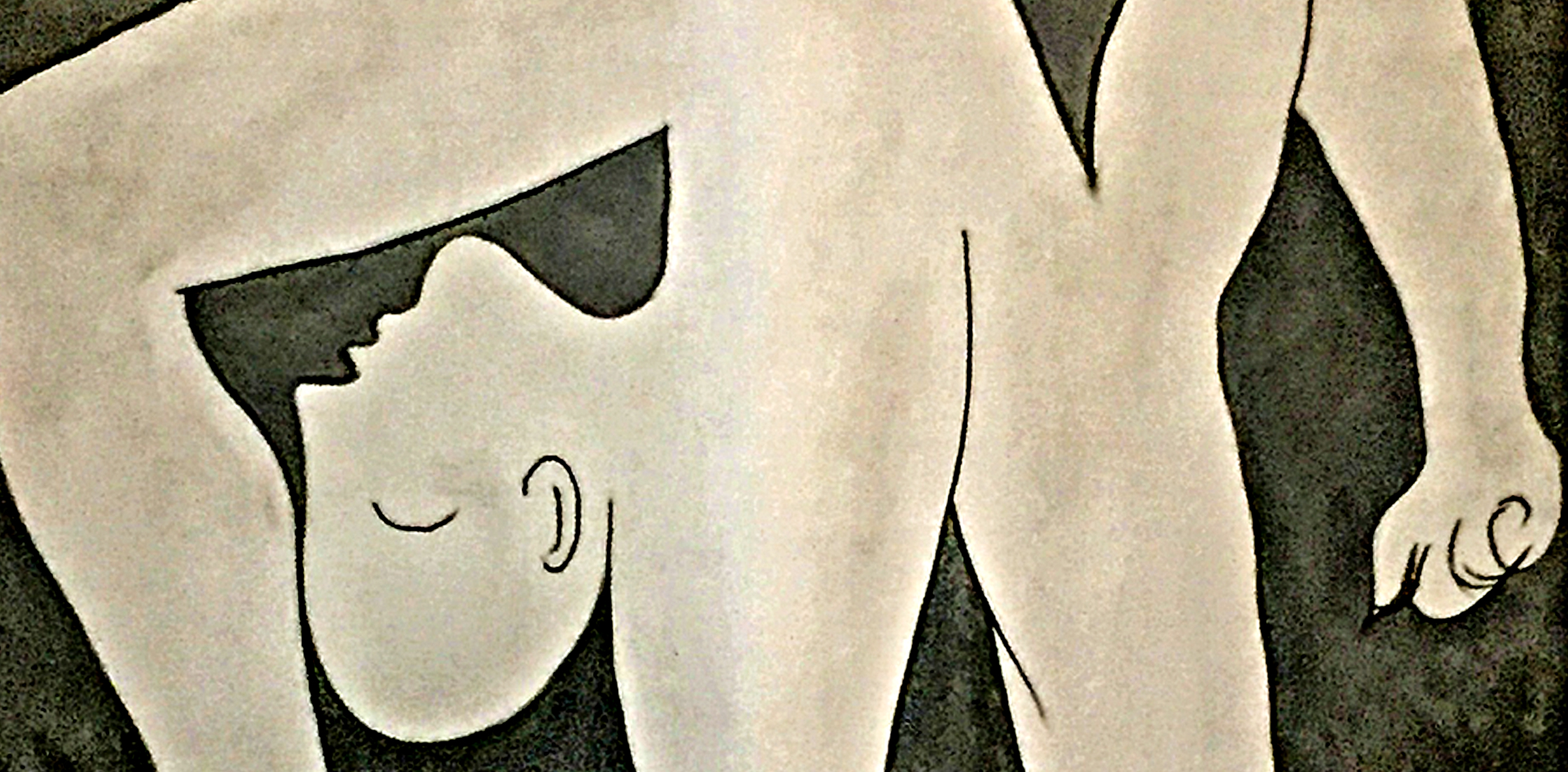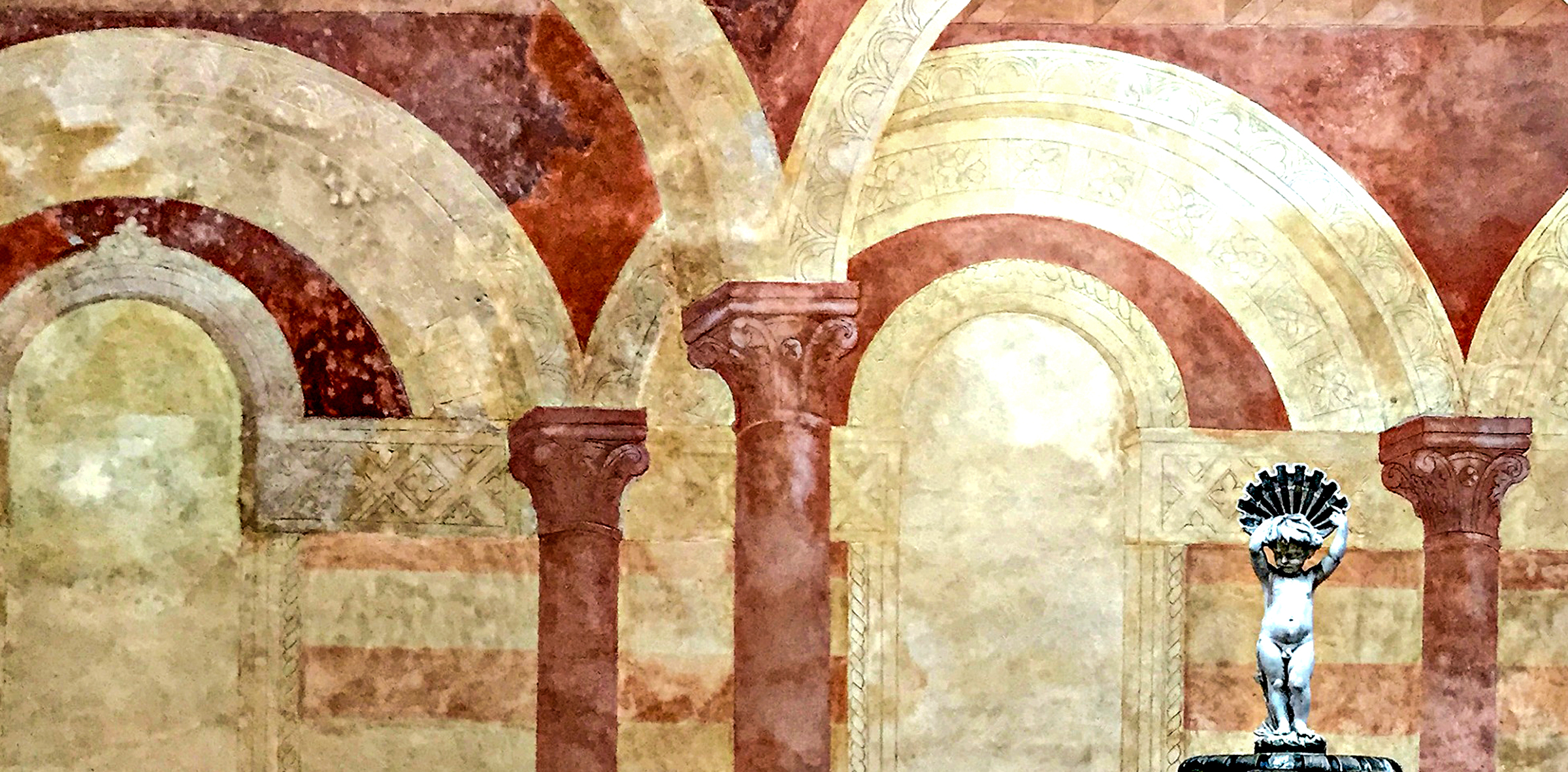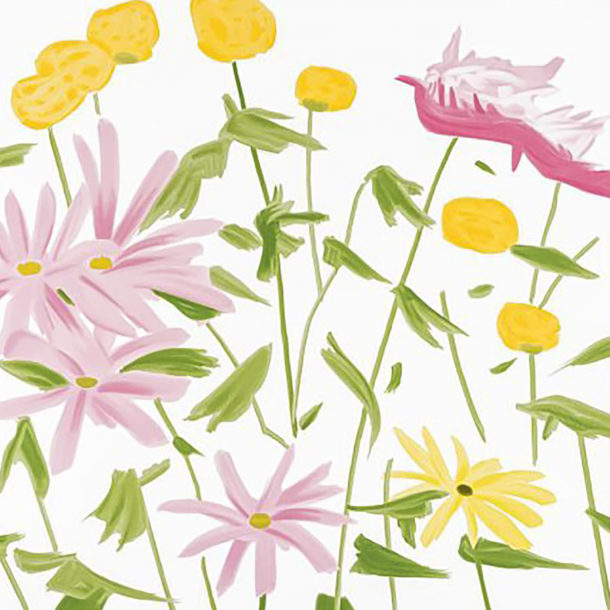An afternoon with Picasso, classically inspired by the Renaissance master Raphael.
Verona – Padua’s sophisticated, older sister – is only an hour away, so I considered it rude not to visit the Picasso exhibition one rainy Saturday afternoon. Who else loves rainy train journeys? And is it terrible that I was longing for a Starbucks?
We headed along the river Adige to the AMO Arena Museo, nestled in the Palazzo Forti right in the historical centre of gorgeous Verona.
As with many corners of Italy, the exhibition began before stepping anywhere near a Picasso: a flower-fairy cherubim peeps coyly out at the bustling, wet visitors. I bet he sees a lot of to-ing and fro-ing of masterpieces. The pink and white fresco behind him looks even richer in the rain.
The gallery has the scent of rain on coats and women’s perfume. It reveals 90 pieces of Picasso’s (1881 -1973) work – it’s the first time I’ve seen his paintings up close, and fascinating to see the metamorphosis he imposes on the human body. Even the museum invigilators are distracted, lost in a world of their own. (So was I with my first ever audio guide, I don’t know why I never bothered to use one! It changes the entire experience. Always, always say yes to audio guides. It was like pottering around with Picasso himself.)
The Spanish painter, sculptor, printmaker, ceramicist and stage designer is known for fiery love affairs with models and muses for his art. What with all the new breasts in town, Juliet Capulet’s bronze boob will have to watch out for competition.
A touch of art history while we’re here: Picasso’s art progressed seamlessly through the phases of Pre-Cubism, Cubism, Classical and Surrealism before arriving in the Post-War period, where he transcends the boundaries of the portrait form as we know it.

The Acrobat
The Acrobat, (1930) is one of my favourite, this piece seems magical in its essence and image, where we’re just a powerless spectator of this strange body bent into an impossible shape. The classic black outline makes it look so simple.
It’s not really an every man’s pose though is it? However, Picasso transforms it into something natural, as if he’s waiting for the bus. I’d like to think that’s me doing yoga, (on a good day.)
Picasso offers us a summary of the most beautiful things to be said on a subject. He is not striving to produce an exact reflection of nature nor compete with it. Instead his work stands alone as a beautiful representation of how he single-handedly reinvented the female form.
According to art critic Waldemar Januszczak, Picasso painted compositions that were classically inspired by Renaissance master Raphael. These paintings, inspired by this antique aesthetic, are still unique creations of Picasso’s imagination. I suppose he was inspired by anything and everything, and it is impossible to pin him down to one source.
‘Who knows whether the key to Picasso’s genius lies in the persistence of this miraculous state of childhood that allows him to maintain a constant state of wonderment.’
Maurice Raynal
His work is deformed and musical and, like his life, controversial. We soon had the afternoon to ourselves and by that time we were ready for a post-Picasso glass of something to mull over his expressions of colour and passion.
Planning a Spring trip to Verona? Toulouse-Lautrec will be exhibiting from April 1st at the AMO Museo Opera. (Warning: the link contains bouncy classical music!)
Picasso perked your interest and longing for more? Those lucky enough to be planning a trip to London next year can go to the Tate Modern to see the ‘once in a lifetime’ solo exhibition of Picasso’s work, The EY Exhibition Picasso 1932 – Love, Fame, Tragedy, another chance to explore beyond the myth of the man and artist open from 8 March until 9 September 2018.


